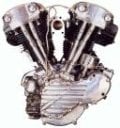It's a good thing I keep track of people I used to work with.
One of my friends knew a friend who heard that the place they worked at was getting rid of some short lengths of Mixed end fiber optic cable.
A week, one photo and a quarter tank of gas later I made arrangements to pick up what appears to be several (more than 15) 20 foot lengths of SC-ST, SC-SC and ST-ST cable next Wednesday.
Since hubs, transceivers and cards are getting cheaper (and since almost all my computers are in the same part of the house) I thought it might be nice to finally upgrade from my tangle of 10Mbit BNC ThinNet, 10Mbit CAT 5e, 100Mbit CAT 5e, AppleTalk and Token Ring to just Token ring (so I can network my old AIX 1.3 box) and Fiber.
The cables I am getting should cover most of my computer room however I'm not going to get all the systems. So far, it will look like I will need seven PCI fiber cards and seven AUI fiber transceivers. If I get a fiber card for the Onyx and the Indy we can take out two transceivers. If I can find two Sbus Fiber cards for the SUN systems, I can take out two more transceivers.
The only systems that I don't think I can network are my macs (both PCI and NuBus) and my Intel (white box) NeXTStep 3.3 system.
The only items I currently have that are related to fiber are two FORE ATM cards for the Crimson and Onyx and a card installed in my Indigo. What do you think?
One of my friends knew a friend who heard that the place they worked at was getting rid of some short lengths of Mixed end fiber optic cable.
A week, one photo and a quarter tank of gas later I made arrangements to pick up what appears to be several (more than 15) 20 foot lengths of SC-ST, SC-SC and ST-ST cable next Wednesday.
Since hubs, transceivers and cards are getting cheaper (and since almost all my computers are in the same part of the house) I thought it might be nice to finally upgrade from my tangle of 10Mbit BNC ThinNet, 10Mbit CAT 5e, 100Mbit CAT 5e, AppleTalk and Token Ring to just Token ring (so I can network my old AIX 1.3 box) and Fiber.
The cables I am getting should cover most of my computer room however I'm not going to get all the systems. So far, it will look like I will need seven PCI fiber cards and seven AUI fiber transceivers. If I get a fiber card for the Onyx and the Indy we can take out two transceivers. If I can find two Sbus Fiber cards for the SUN systems, I can take out two more transceivers.
The only systems that I don't think I can network are my macs (both PCI and NuBus) and my Intel (white box) NeXTStep 3.3 system.
The only items I currently have that are related to fiber are two FORE ATM cards for the Crimson and Onyx and a card installed in my Indigo. What do you think?





















 <-------- A very happy forum member.
<-------- A very happy forum member.










